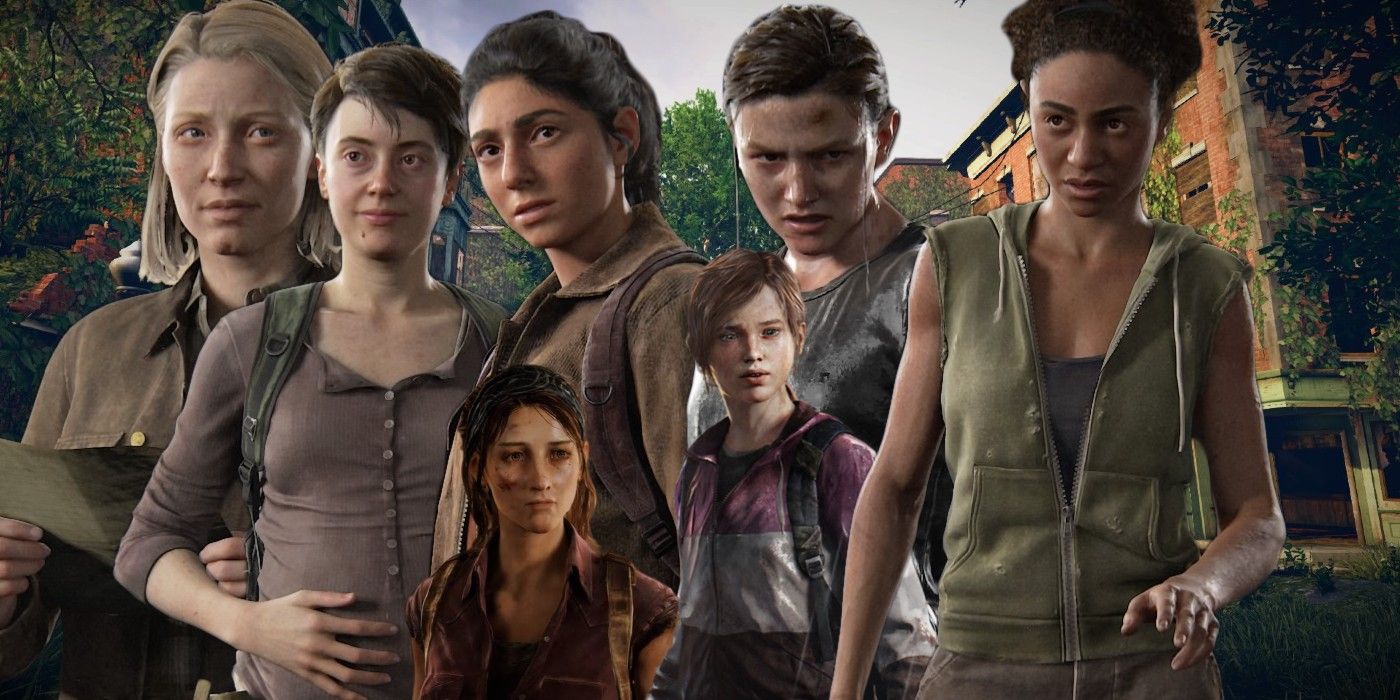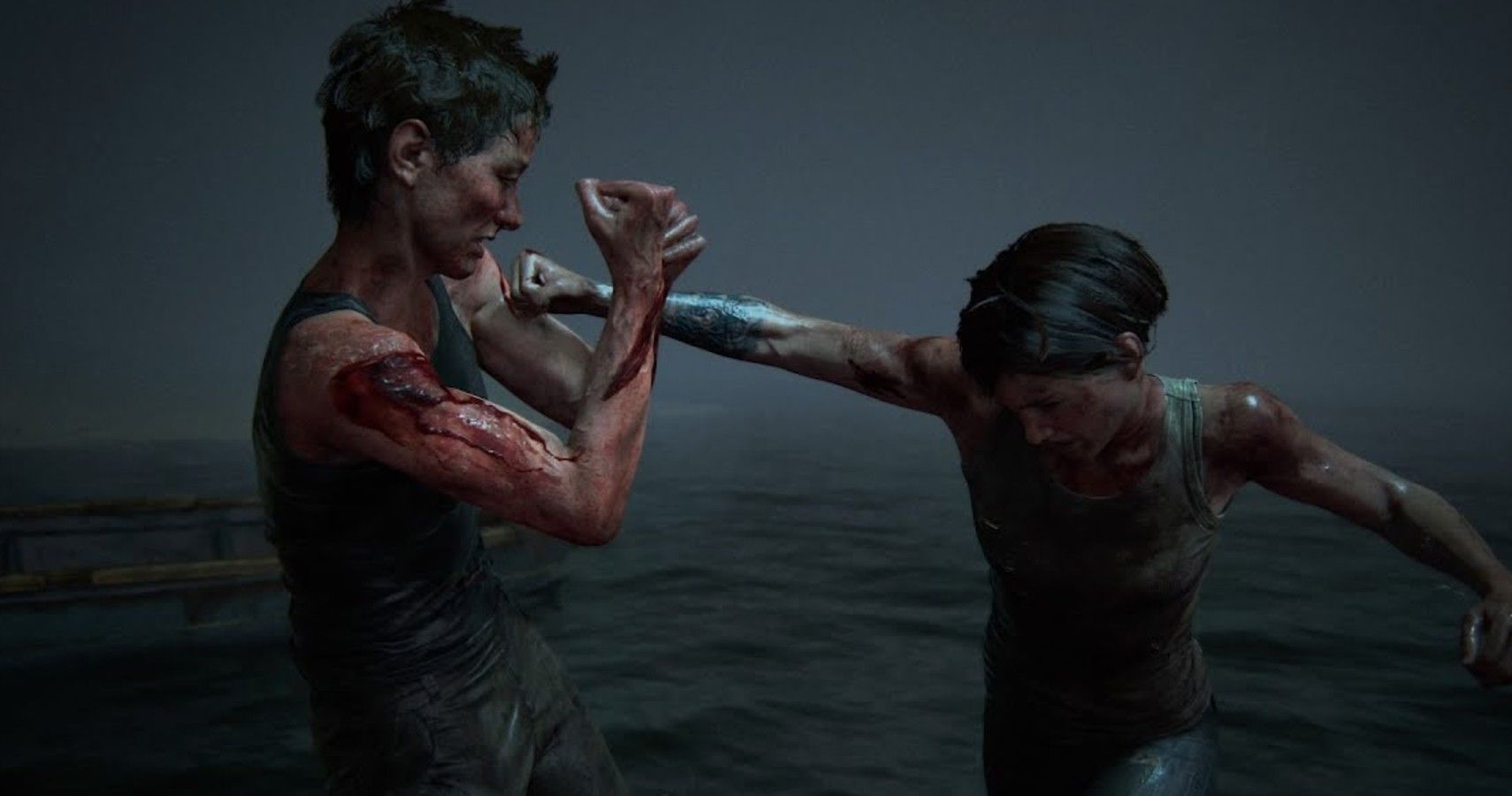
When The Last of Us first released in 2013, it sent shockwaves through the gaming community. The post-apocalyptic title was showered in praise for everything from its gameplay and its visuals to its characterizations and thought-provoking story arc. The universal acclaim that The Last of Us received on its release culminated with many high-profile accolade wins, including several Game of the Year awards. But, even before The Last of Us actually launched, it was making headlines. Not for its gritty depictions of death and the horrifying portrayal of its Infected. Rather, for featuring a female lead on its video game box art.
Series protagonist Ellie, who is portrayed as a 14-year-old girl and ward of Joel Miller in the first instalment of the The Last of Us franchise, can be seen taking front place in the final 2013 game art. However, Naughty Dog’s Neil Druckmann had to fight to make this happen. In an interview with VG247 from 2012, Druckmann was recorded saying that “there’s a misconception that if you put a girl or a woman on the cover, the game will sell less,” and that there were discussions to “push Ellie to the back” of the cover art. Needless to say, everyone at Naughty Dog refused, and Ellie retained her place in the foreground of The Last of Us’ promotional work and eventual video game cover.
Its sequel, The Last of Us Part 2 went on to be released in the summer of 2020, and Ellie once more graced the final artwork of the game’s cover. This time she was a gritty and more mature Ellie than audiences had seen in Naughty Dog’s first The Last of Us title. On its launch, The Last of Us Part 2 smashed PlayStation records, selling four million copies within three days, making it the fastest-selling first-party exclusive for Sony (so much for female characters harming sales). But it is not just through a female character taking center stage in artwork that elevates women in The Last of Us ( in both Parts 1 and 2). The way women are portrayed throughout the games themselves has also been a huge step forward in breaking stereotypes and preconceived misconceptions that surround women in gaming.
How The Last Of Us Elevates Female Characters’ Roles

Within both The Last of Us and The Last of Us Part 2, the female characters are depicted as strong and capable individuals, while also being fighters and survivors. Even with this tougher edge, however, they do not lose their femininity. Yes, they can throw a punch and fire a gun just as well as male protagonist Joel can, but they are still most certainly female, and (pleasantly) not in an overtly-sexualized way. Their ability to handle themselves well in the grim worlds of the The Last of Us franchise just happens to be one aspect to their overall character.
Tess, Joel’s original partner in The Last of Us, is shown to be a stern negotiator and more than capable ally throughout the game’s first few chapters before her heroic (and far too soon) demise. The fact that she also happens to be a woman is inconsequential. Should her character’s gender have been reversed in The Last of Us, little to no differences would needed to have been made in the game’s script or overall plot.
Meanwhile, in The Last of Us Part 2, Naughty Dog introduced not just one, but two pregnant characters. At no point during the game, however, is either pregnancy implied to be a weakness. Mel, member of the WLF, is still very much part of the team despite her burgeoning bump. And while Dina does not necessarily realize that she is pregnant until she has already committed to joining Ellie on her quest of revenge to Seattle, she still throws herself readily into defending Ellie even once she begins to rightfully suspect that she may be carrying a child.
Ellie and Abby, dual protagonists of The Last of Us Part 2, may be vastly different in appearance, allegiance, and sexual orientation, but both are still wholly women. Like Tess, the fact that they happen to have vaginas is inconsequential. They still fight, they still care, they still love, and they still find their own ways to survive in an incredibly hostile world. This would be the same with or without the males in their lives. The fact that Abby’s character design led some to speculate whether or not she was transgender speaks more about the perception of what people feel a female lead should be than it does about Abby’s actual character and her femininity.

There are high hopes among The Last of Us players that Naughty Dog will continue on with the series. The way that The Last of Us Part 2 concluded certainly leaves plenty of scope for the developers to do so. While there is nothing official on the cards yet, both Ellie’s story and Abby and Lev’s story could easily be expanded upon. Their lack of male genitals does not stop that, and nor should it.
Games, and the way they portray women, have taken great strides since the initial release of The Last of Us in 2013. In that time, protagonists such as Horizon: Zero Dawn’s Aloy, Uncharted: The Lost Legacy’s Chloe Frazer, and Senua from Hellblade: Senua’s Sacrifice have all further shown that a female lead can carry a game. Hopefully as more time passes and the ideas of what female characters within a game should or should not be lessen, the gaming community will be treated to more fantastic and inspiring leads; be they male, female, transgender, asexual or otherwise. Just as long as the game is enjoyable to play, gender ultimately does not, and should not, matter.





